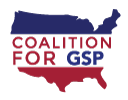Bryan Riley of the National Taxpayers Union recently wrote about how “tariffs impose a hidden tax on families and increase the price of many goods students may need as they return to the classroom.” NTU created the infographic below to show just how high average tariffs on many everyday products were in 2020.
While GSP normally helps lower average tariffs on many of these products, the current expiration means tariffs in 2021 are now even higher!
Take bicycles. The graphic shows average tariffs of 15% in 2020, but the average tariff paid in the first half of 2021 is over 22% – in part to millions of dollars in new tariffs paid on bicycles from Cambodia because of GSP expiration. In response to the Coalition for GSP’s ongoing survey, bicycle company SPECIALIZED reported raising prices to U.S. consumers because of the extra tariffs. About 75% of survey respondents similarly report raising prices to cover tariff costs.
Or gym bags. The graphic shows average tariffs of 23.5% in 2020, but the average tariff paid in the first half of 2021 is more like 28%. GSP expiration has led to tens of millions of dollars in extra tariffs on duffel bags that weren’t assessed in 2020. Many of these products left China for GSP countries to avoid high tariffs, but then faced higher tariffs due to GSP expiration anyways.
Musical instruments. Rulers. Phone cases. Backpacks. Sports equipment. Colored pencils. Pens. Water bottles. All of those products (and many others) now face extra tariffs in 2021 because Congress let GSP expire on December 31, 2020.
Congress should renew GSP immediately so companies can stop raising prices on necessary items such as back-to-school supplies. If you’re a company impacted by GSP expiration, please answer our impact survey here. No company-specific details will be published without explicit permission.

